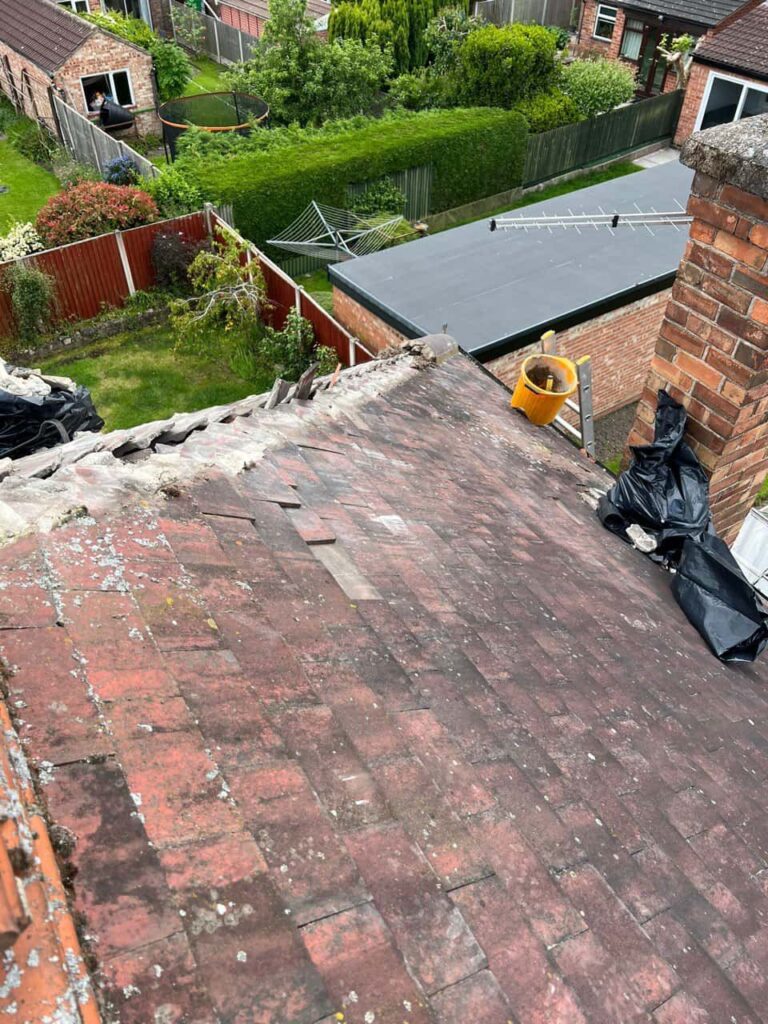Felt roofing is a popular and cost-effective choice for flat and low-pitched roofs, providing weather resistance and a smooth, protective surface. However, like any roofing material, felt has a limited lifespan and will eventually begin to deteriorate. Recognising the early signs of failure is essential to prevent leaks, structural damage, and costly repairs.
At Keyworth Roofing Repairs, we specialise in maintaining and repairing felt roofs, ensuring they remain watertight and functional for as long as possible. Here’s how to spot the warning signs before minor issues turn into major problems.
1. Visible Cracks or Splits in the Surface
Over time, exposure to sunlight, temperature changes, and weather can cause the felt to dry out and crack. Small splits may seem harmless, but they can quickly allow water to penetrate the roof structure. Regular inspections will help identify these early before they worsen.
2. Blistering or Bubbling
Trapped moisture or air beneath the felt layer can cause blistering. These raised areas compromise the integrity of the roof surface and can eventually burst, leaving the underlayers exposed to the elements. This is a clear sign that the roof may need professional attention.
3. Lifting at the Edges
If the felt is beginning to lift or curl at the edges, it’s often due to adhesive failure or prolonged exposure to harsh weather. Lifted edges can allow water to seep underneath, which is especially damaging during heavy rain.
4. Moss and Algae Growth
Moss or algae on a felt roof not only affects its appearance but can also indicate that moisture is being retained on the surface. Over time, this can break down the material and accelerate deterioration. Cleaning and treatment can help, but it’s important to address any underlying drainage or surface issues.
5. Ponding Water
Felt roofs should allow rainwater to run off efficiently. If water pools in certain areas for more than 48 hours after rainfall, this is known as ponding. Persistent standing water can weaken the felt and create pressure points that eventually fail.
6. Internal Water Stains
Signs of felt roof failure aren’t always visible from the outside. Damp patches, peeling paint, or water stains on ceilings or walls inside the property may indicate a leak in the roof covering. This should be investigated promptly to prevent further damage.
7. Age of the Roof
Even if there are no obvious signs of damage, the age of the felt roof is an important factor. Most felt roofs have a lifespan of around 10–20 years depending on quality, installation, and maintenance. If yours is approaching this age, it’s wise to have it inspected by professionals like Keyworth Roofing Repairs to assess its condition.
Protecting Your Felt Roof
Catching these warning signs early allows for targeted repairs, which can extend the life of your felt roof and avoid the need for a full replacement. Regular maintenance, including cleaning gutters, checking for damage, and arranging annual roof inspections, is key to preventing costly problems.
Conclusion
Felt roof failure doesn’t happen overnight—it’s usually the result of gradual wear and tear. By learning to recognise the signs such as cracking, blistering, lifting edges, and internal damp, you can act quickly to protect your property.
If you suspect your felt roof is showing signs of deterioration, contact Keyworth Roofing Repairs. Our experienced team can assess the damage, recommend the best course of action, and carry out high-quality repairs to keep your roof performing at its best.
Call us on: 0115 647 1193
Click here to find out more about Keyworth Roofing Repairs
Click here to complete our contact form and see how we can help with your roofing needs.

